May 16, 2025 | 02:01 GMT +7
May 16, 2025 | 02:01 GMT +7
Hotline: 0913.378.918
May 16, 2025 | 02:01 GMT +7
Hotline: 0913.378.918
Son Binh is one of 7 communes of Khanh Son mountainous district including 4 villages: Co Lac, Lien Hoa, Lien Binh, and Xom Co. The entire commune has 5 ethnic groups: Kinh, Raglai, Muong, Tay, and Hoa living together, of which the Raglay ethnic group accounts for over 75% of the commune's population.
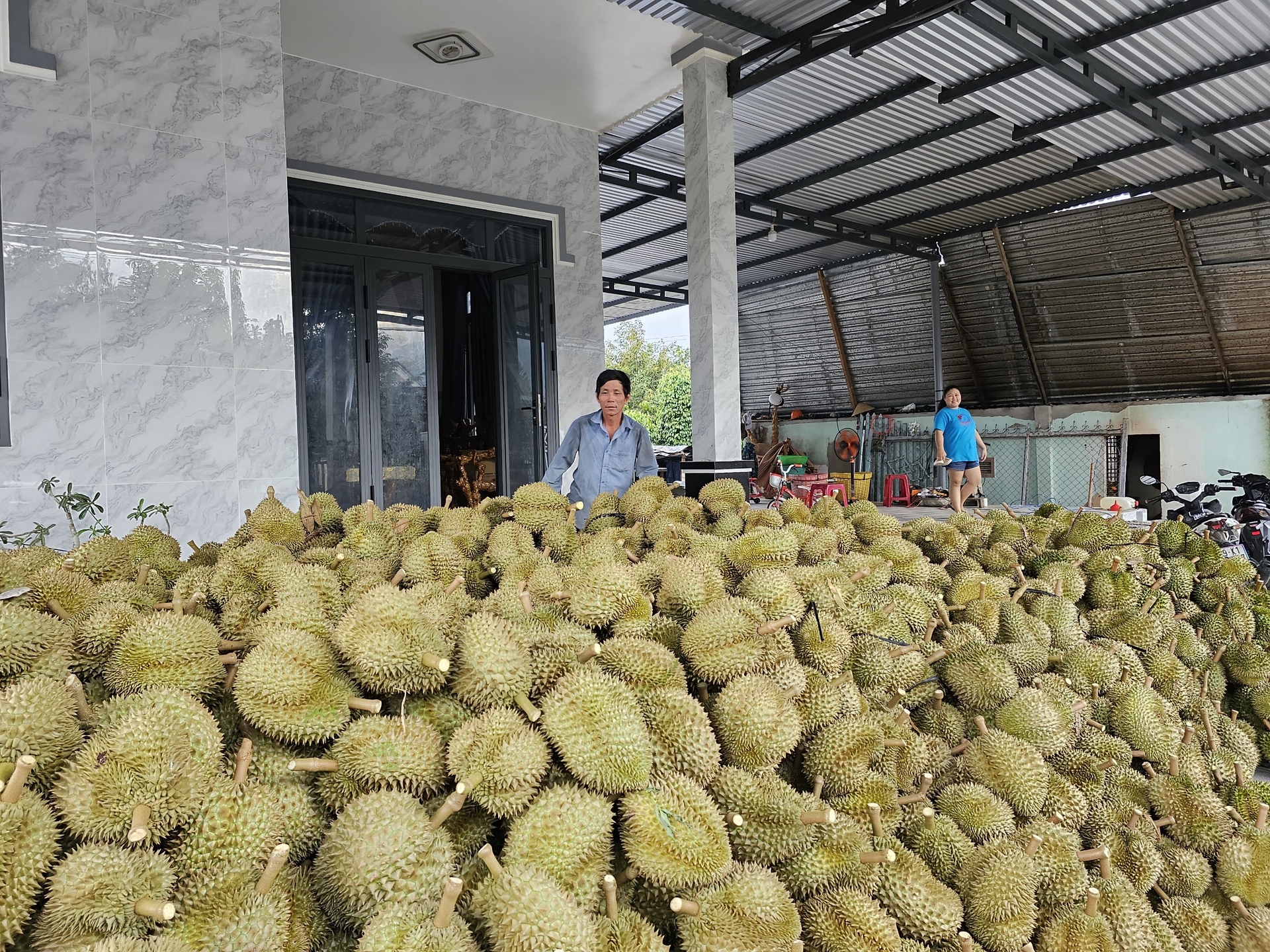
Mr. Van Tan Dat, Lien Hoa village, Son Binh commune, said that thanks to durian, his family became better off. Photo: KS.
In previous years, the rate of poor and near-poor households in this commune was more than 61%. However, in recent years, according to Mr. Nguyen Quoc Phong, Chairman of Son Binh Commune People's Committee, thanks to the attention of the Party and State, along with promoting the conversion of ineffective crops to fruit trees, especially durian trees, it has helped people in the area earn effective income, and the rate of poor households is increasingly decreasing. By the end of 2022, Son Binh commune still has 307 poor households, accounting for 30%.
“Currently, the total area of perennial trees in Son Binh commune is 511 ha, of which 380 ha of durian are in business, with a total output of more than 3,000 tons. It can be said that durian trees have helped many people escape poverty and become well-off", Mr Phong shared.
Typically, Mr. Van Tan Dat's family, Lien Hoa village, Son Binh commune, was formerly a poor household in the commune. Due to having many children (5 children) and not knowing what crops to grow to bring about economic efficiency, his family's life was miserable and lacking in many ways.
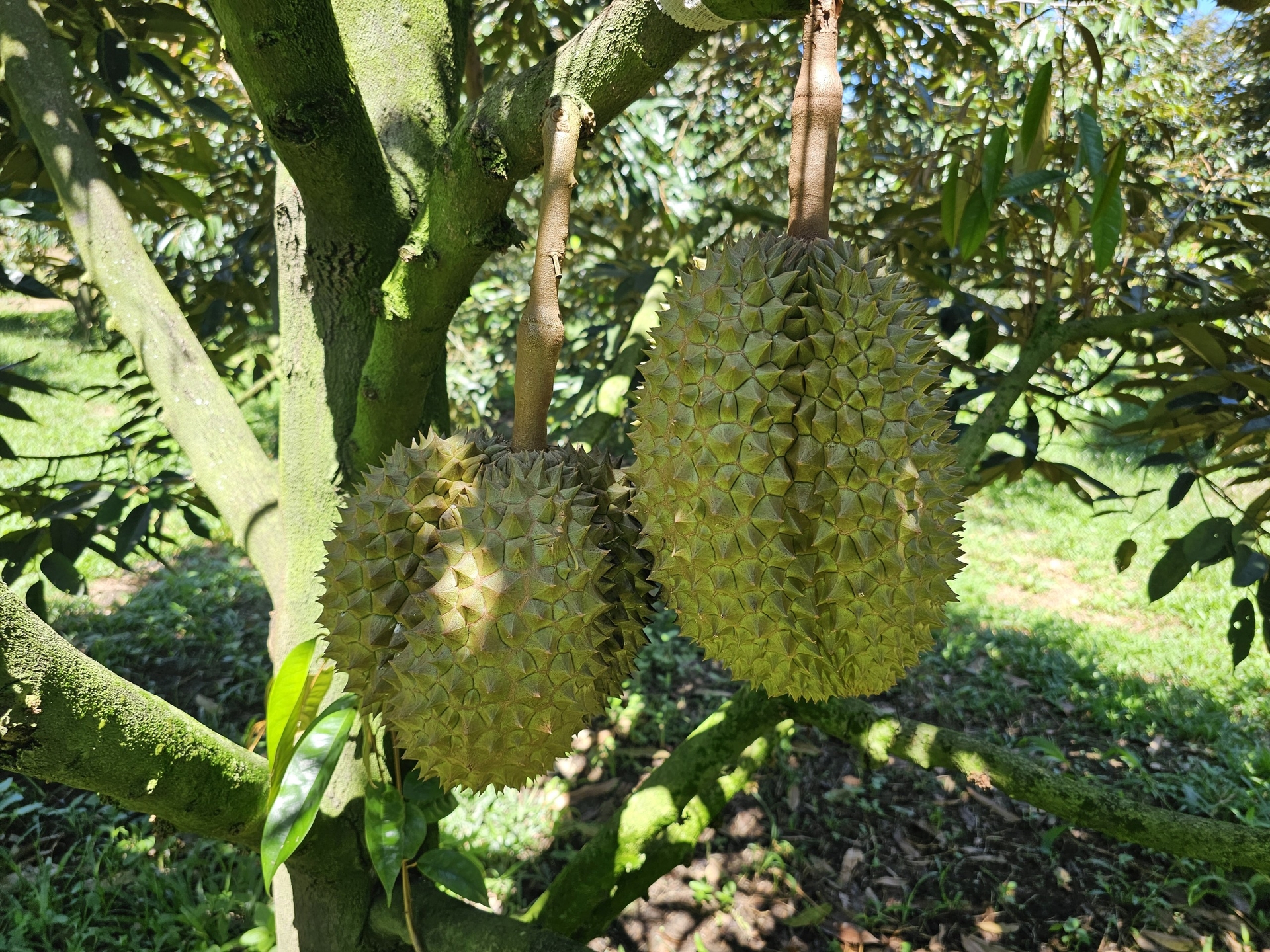
Thanks to durian, many families in Son Binh escaped poverty. Photo: KS.
It was not until 2008 when the locality supported his family and ethnic minorities in growing durian trees, that life became less difficult.
According to Mr Van Tan Dat, thanks to the suitable climate and soil, durian trees have taken root in Son Binh commune in particular and the mountainous district of Khanh Son (Khanh Hoa) in general. This helps many households escape poverty and become rich legitimately.
To date, Mr. Dat's family has developed 5 ha of durian, of which 2 ha have yielded fruit, earning an average annual profit of VND 700 - 800 million. This year alone, thanks to a good durian harvest, the price is up by VND 70-80 thousand/kg for Mongthong durian (the highest ever). So his family earned more than VND 2 billion. After deducting expenses, his profit was more than VND 1.5 billion.
Pointing at the Thai-roofed house worth VND 1.5 billion that was completed last year, Mr. Dat said that it was thanks to durian. Before, the family had to live in a simple, shabby house. Not only Mr. Dat's family, but many other families in Khanh Son district also changed their lives thanks to the durian tree.
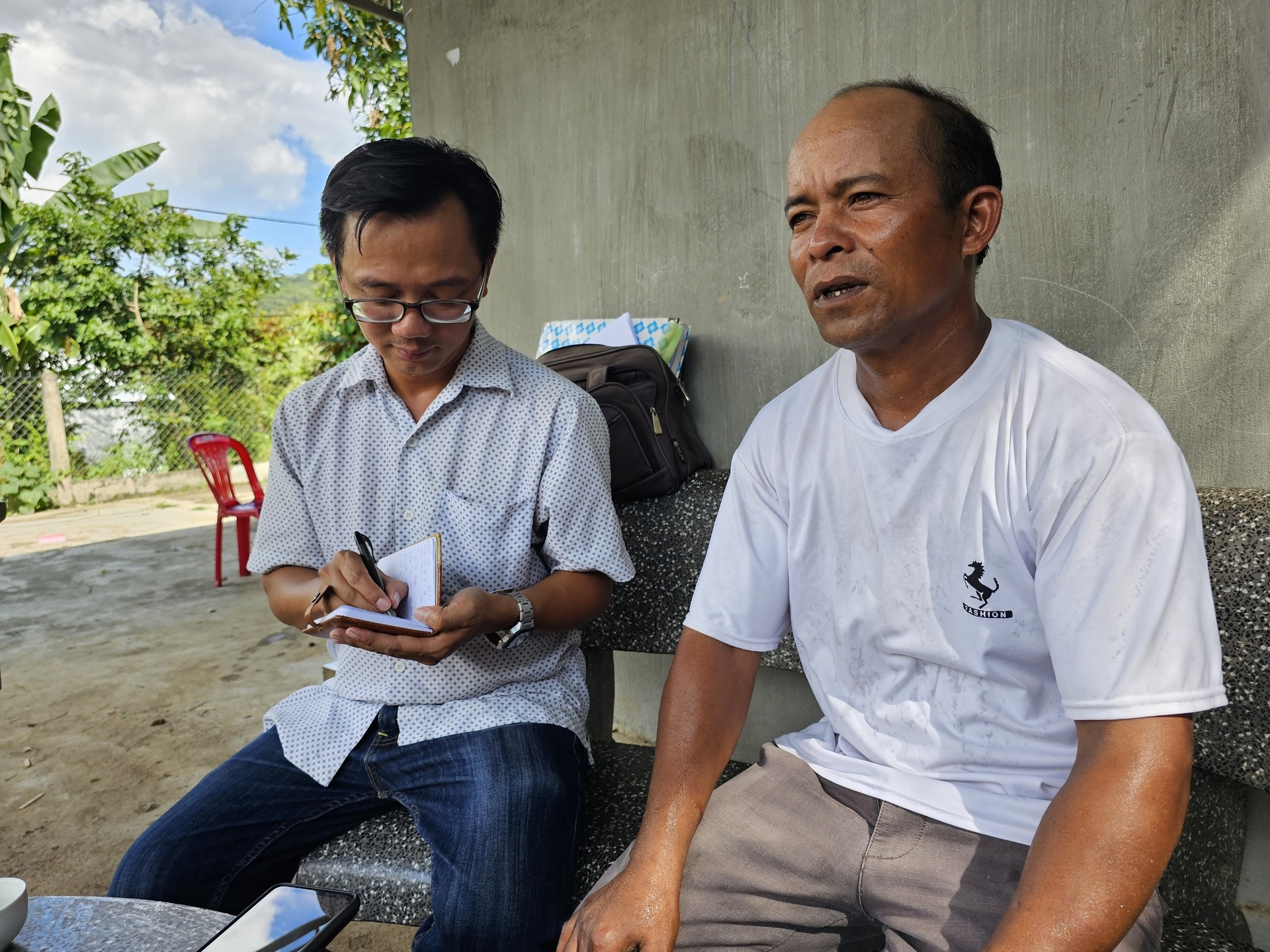
Mr. Bo Bo Kha said that durian trees help people become more prosperous. Photo: KS.
Mr. Bo Bo Kha in Hap Thinh residential group, To Hap town also affirmed that thanks to durian trees, people's lives, especially compatriots, are more prosperous. “Previously, ethnic minorities in the district only knew how to grow sugarcane and coffee. Now, people grow durian and have higher income, so they are now working together to develop the area", Mr Kha shared.
For example, Mr Kha's family is currently growing durian on up to 2 ha, of which 120 trees are in business. For this year's durian crop, he collected VND 200 million and is very excited.
According to Mr. Nguyen Quoc Dong, Vice Chairman of Khanh Son District People's Committee, the locality is a mountainous district where most ethnic minorities live. The poverty rate is high and access to scientific and technical applications in production is still limited. Infrastructure for production is not really favourable; enterprises operating in the agricultural sector are not highly effective.
Faced with that general situation, to support people in escaping poverty in the coming time and creating opportunities to generate stable income, the district will focus on propagandizing and mobilizing people to participate in synchronous and effective implementation of programs in the district such as the national target program for sustainable poverty reduction, National target program for socio-economic development in ethnic minority and mountainous areas; National target program for building new rural areas. At the same time, focus on supporting production development to increase stable income for poor households, near-poor households, and ethnic minority households in the area.
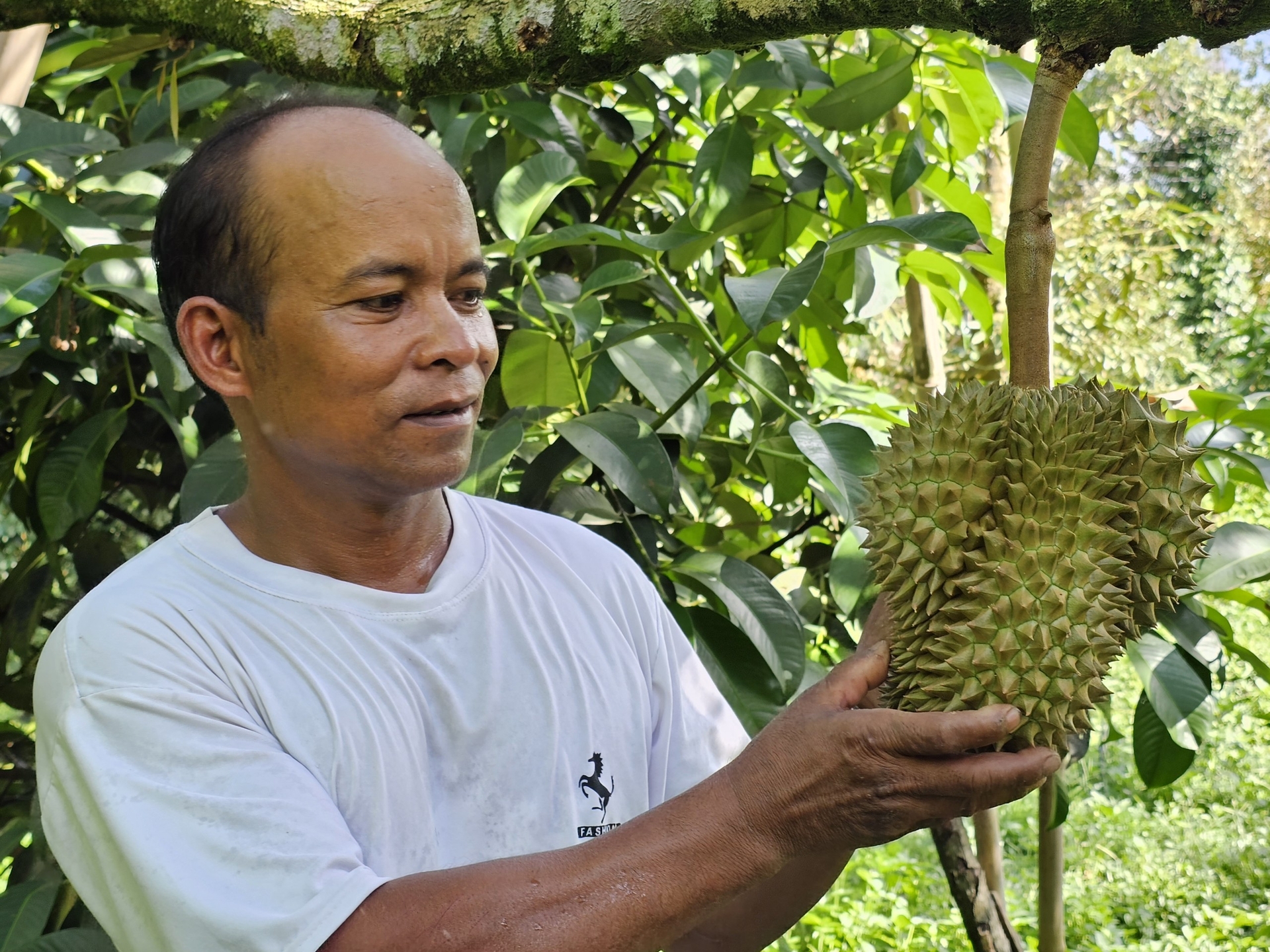
Mr. Bo Bo Kha's family currently grows durian of up to 2 ha. Photo: KS.
However, to perform well in the poverty reduction task, the district will focus on existing strengths such as supporting the development of agricultural production based on identifying key crops (such as durian), combining community tourism and agricultural tourism is considered important and has the potential to bring economic efficiency.
In addition, the district will gradually raise awareness and change people's thinking about agricultural economic development associated with building new rural areas and implementing digital transformation in agriculture; strengthening the application of information technology in the production, processing and consumption of local agricultural products.
Along with that, strongly develop local key crops, add value to district products through the OCOP Program; forming concentrated fruit growing areas that meet standards for granting planting area codes and linking value chains, community groups develop production to contribute to completing the National Target Programs in the period 2021 - 2025. Promote the application of high technology in the intensive cultivation of local key crops to improve product quality and value, aiming to export key crops including durian, bananas, green-skinned grapefruit, and purple sugarcane.
Implementing the goal of Resolution No. 09-NQ/TW of the Politburo on building Khanh Hoa province to become a centrally run city, by 2025, Khanh Son and Khanh Vinh districts must escape poverty. To date, Khanh Hoa province has 10,826 poor households, accounting for 3.2%, a decrease of 2,051 households, and the reduction in poor households reaching 0.66%. Of these, Khanh Son district has 3,062 households, and Khanh Vinh has 4,211 households.
Translated by Hoang Duy

(VAN) Japan's efforts to lower the price of rice through the release of its stockpile may finally be making some progress, albeit at a snail's pace.

(VAN) U.S. tariffs are not only a 'shock', but also an opportunity for Vietnamese businesses to renew their mindset toward comprehensive development.

(VAN) As Bac Giang lychee enters the harvest season, Minister Do Duc Duy expects that the fruit will contribute greatly to agricultural exports due to standardized production and deep processing.

(VAN) Consumers have shown a preference for free-range eggs, but those farming systems are more vulnerable to biosecurity risks like bird flu.
/2025/05/09/5701-1-184335_301.jpg)
(VAN) Vietnam’s eel exports nearly doubled thanks to a mud-free farming model, opening up new prospects while still facing numerous barriers related to international standards.

(VAN) Minister Do Duc Duy warned that if production is not professionalized and supply chains are not transparent, the U.S. market could become a growth bottleneck.
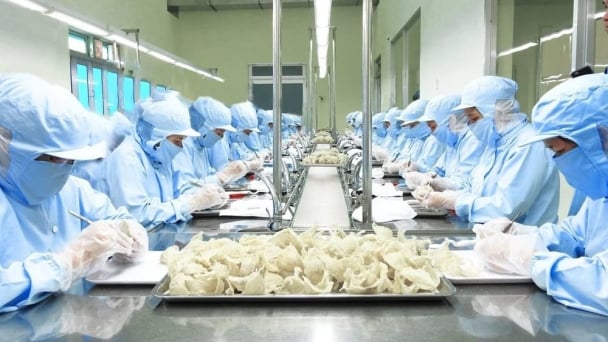
(VAN) Delegating surveillance responsibilities to local authorities is a cost-saving and efficiency-boosting measure that removes a key bottleneck for enterprises, according to Director General Duong Tat Thang.